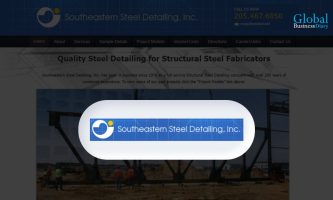What Is A Holding Company? – Importance, Operation, And Pros & Cons

What is a Holding Company? – A Holding Company is a type of company that generates revenue by owning assets and does not conduct any operations, ventures, or active tasks. If you want to start a holding company, you must be prepared to earn revenue by not engaging in the buying and selling of products and services. You can form it to gain control over one or more companies or any other assets.
In this article, you will learn about what a holding company is and what is the importance of having a holding company. Apart from that, you will also learn how a holding company works, where we will give you an idea of its operations. Finally, you will learn about the major pros and cons of running a holding company. Hence, to learn more about holding companies read on through to the end of the article.
What Is A Holding Company?

According to Investopedia,
“A holding company is a business entity—usually a corporation or limited liability company (LLC). Typically, a holding company doesn’t manufacture anything, sell any products or services, or conduct any other business operations. Rather, holding companies hold the controlling stock in other companies.”
You can understand from this definition that a holding company basically owns the assets of other companies. However, it has the power of only overseeing those assets. Just having a mere oversight does not let the holding company actively participate in the business’s daily operations or the operations of its subsidiaries. In many cases, holding companies are also termed as “umbrella” or parent companies.
The major purpose of creating a holding company is to have ownership of investments, which can be private businesses as well. The businesses that a holding company owns are known as subsidiaries. All the subsidiaries of a holding company are responsible for their own debts, and hence holding companies remain protected from the liability of subsidiaries.
On the other hand, subsidiaries of a holding company and minority shareholders of the main company can also experience a reduction in the level of control they have over a business.
Read More: Marginal Cost: Definition, Formula, Examples, And More
Why Is A Holding Company Important?

Having a holding company gives the parent business greater control of its smaller investments.
According to the Corporate Finance Institute,
“It gives the holding company owner a controlling interest in another without having to invest much. When the parent company purchases 51% or more of the subsidiary, it automatically gains control of the acquired firm. By not purchasing 100% of each subsidiary, a small business owner gains control of multiple entities using a very small investment.”
In addition to that, if a particular holding company has control over different small subsidiaries, each of the subsidiaries can be considered a legal entity. It implies that if one subsidiary faces a lawsuit (for whatever reasons), the plaintiffs do not have the right to claim the assets of other subsidiaries in the holding company.
Apart from that, if the subsidiary that is under lawsuit acts independently, then no one can hold the parent company responsible. This is how the parent company can save its assets from lawsuits by creating a holding company.
Other than strategic decisions and monitoring the performance of the subsidiaries, a holding company cannot get involved in the activities of its subsidiaries. This means that the management of the subsidiary retains its roles and continues to conduct business as usual.
How Does A Holding Company Work?

According to Indeed.com,
“A holding company is a corporation that doesn’t run a particular business or participate in the daily operations of a business. Holding companies hold or own investments such as private businesses, stocks, bonds, mutual funds, real estate, gold, patents, and copyrights. Holding companies are parent corporations that maintain the oversight capabilities of companies that they own.”
Due to being parent organizations, holding companies can oversee all the management decisions of their subsidiaries, as well as have control of the policies inside. The sole purpose is to have control over other companies. Apart from that, holding companies can also get ownership of properties like real estate, stocks, trademarks, patents, and more.
Holding companies have this kind of structure, as it serves to limit the financial and legal liability exposure of itself (and also of its subsidiaries). It also has the power to depress the overall tax liability of a corporation. They can do this by strategically basing certain parts of their business in those areas where there are lower tax jurisdictions.
What Are The Pros And Cons Of A Holding Company?
The following are the major pros and cons of having a holding company:
Pros Of A Holding Company
Here are the major pros of holding companies that you will benefit from:
- Holding companies can oversee the assets of the business and make decisions related to it.
- They can make strategic decisions and monitor business performance.
- These companies enjoy the benefit of protection from the losses of their subsidiaries.
- These companies enjoy the benefit of protection from lawsuits against a subsidiary.
- It is easy to create or change a holding company.
Cons Of A Holding Company
Here are a few cons of holding companies that you must be aware of:
- Along with a subsidiary, the holding company can also experience capital loss and a decline in net worth.
- It is difficult to find an accurate financial health of the holding company.
- Unethical directors might hide their losses by moving debt among their subsidiaries.
- Holding companies can also force or exploit their subsidiaries to make decisions.
Read More: Inventory Turnover Ratio: Definition, Formula, Working, And More
Final Thoughts
What is a holding company? – Hope this article was helpful for you in getting an idea of how holding companies operate. A holding company is a financial organization that owns a controlling interest in other companies. The holding company oversees the assets of the business, while the parent company manages the daily core operations of the business.
Holding companies have protection from losses that their subsidiaries make. Hence, if a subsidiary goes bankrupt, the holding company is not responsible. Do you have any more information to add regarding holding companies? Share your information and ideas with us in the comments section below.
Read Also:













